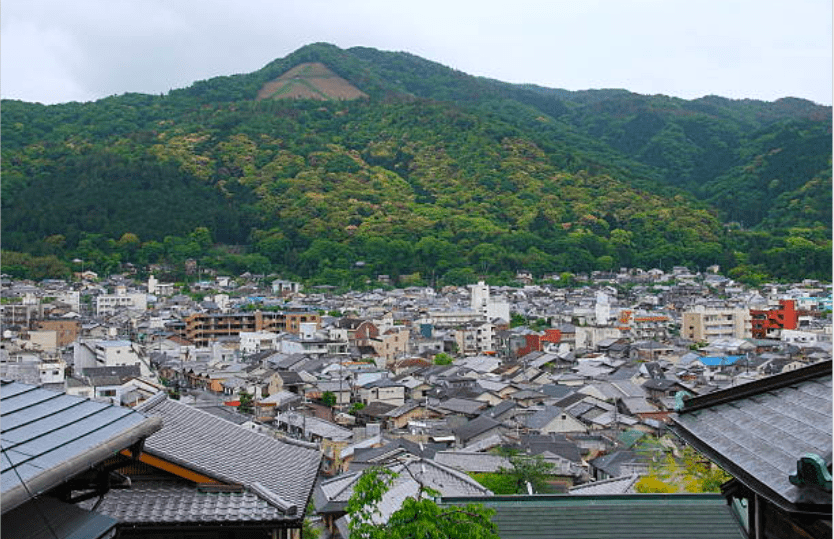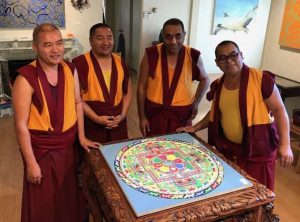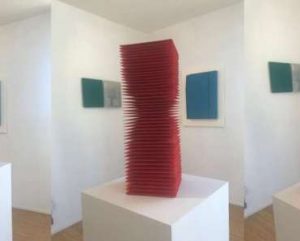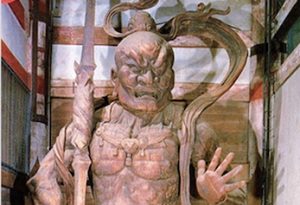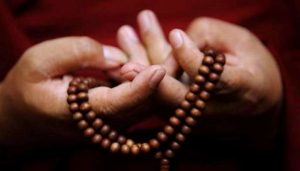Kyoto is a valley city surrounded by beautiful wooded mountains, with the Kamo River flowing through from north to south. It is, in fact, a city designed as a mandala on a landscape of auspicious geomancy. At the height of summer, five mountain tops are inscribed with huge Japanese characters, which are set alight, burning sacred letters into the night sky and forming a ring around Kyoto. This is Obon, the “send off.” During the three-day Obon festival, the ancestors return to their progeny, who greet them with festivities, food, dancing, and finally the great night when the mountains sing with letters of fire, and all of Kyoto sways to send their ancestors back to the other world.

The Obon festival is a Buddhist–Confucian tradition with an unusual take on demons and the afterlife. According to legend, one of Shakyamuni Buddha’s devoted disciplines, Mokuren in Japanese (Skt: Mahamaudgalyayana), discovered that his own mother was suffering in the afterlife, having taken the form of a hungry ghost. In Buddhist lore, hungry ghosts are insatiable in the afterlife, deeply unhappy and needy spirits. It is not unlike Dante making the punishment for each sinner more of their sin. Hungry ghosts are easy to recognize: very long necks and distended stomachs, which make eating nearly impossible.

The Buddha instructed Mokuren to offer food for his mother and other hungry ghosts, inviting them to this world for comfort and companionship to ease their suffering in the afterlife. After three days, the Buddha instructed the people to light fires, set candles afloat, and gather relatives and neighbors. Then the Buddha instructed that they dance. And so, wearing fun and light traditional kimonos, they danced. Everybody dances; the banks of the Kamo River are populated by all-day picnics and all-night circle dancing as the people sing their ancestors back to their afterlife abode.
In many parts of the world, summer is a time for family reunions, and the Obon festival is an event that embraces everyone, young and old, dead and alive; who gather to celebrate when times are good and even the ancestors can look on today’s generation and be pleased. The inter-dimensional Bon Odori, or Bon dance, goes on for hours, with people singing the songs or a master singer keeping the songs going along with the party. An intergenerational gathering in the Kyoto Obon might include 15 generations. That’s a big dance.

The regional varieties of Obon dance are too numerous to count. There is great local pride and fun in these happy, dancing fire festivals of high summer. In the southern prefecture of Tokushima, they take particular pride in their Bon Odori, called Awa Odori, which breaks out as an enormous procession of dancers. The municipality has produced a lovely eight-minute video that shows the real fun and the super abundance of dances. One distinctive step of the Awa Odori is women dancing on the front part of their raised wooden shoes called geita. It is at once exciting and mesmerizing.
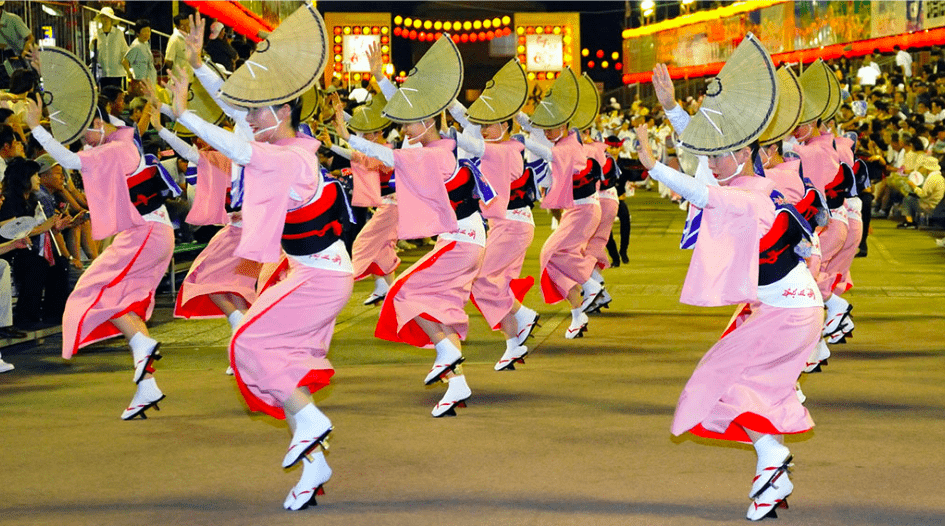
The ancient Nembutsu Odori is also performed during the Obon festival period. Based on the simplest Buddhist chant, Namo Amidha Butsu, the famous Tendai monk Ennin (also known as Jikaku Daishi; c. 793–864) taught this mantra to simple villagers as a sure way to attain salvation, and with the pledge that if they did so, he would teach them a dance with drums that used the chant. Ennin wanted drums to interest the children in the fun of the occasion; as evil is cast out with the powerful mantra, drums beat a slow stealthy rhythm, and fringed hats are worn. It is a loosely designed arrangement allowing for many variations. The point is the excitement, the mystery.

Together, Bon Odori and Nembustu Odori are also hybrid ghost stories, whether it is ancestors of all stripes flying back from another dimension to visit for a few days, or relatives stuck in the Wheel of Life and Death, Obon’s happy, loving festivals sing out: “These are the heady days of summer and here we are all together again. See you next year.”
See more
Related features from BDG
Sagi Mai: Dance of the White Heron
Okina, an Endless Blessing from Long Ago
Noh Now
Rarified, Recondite, and Abstruse: Zeami’s Nine Stages
Hagoromo
Beauty and Sadness: Reflections on a Japanese Noh Play


